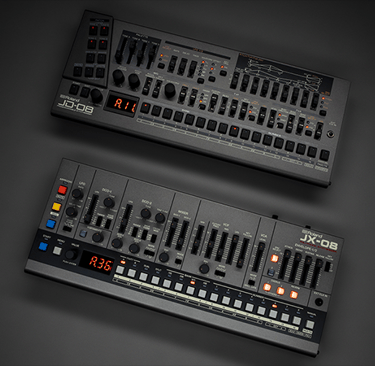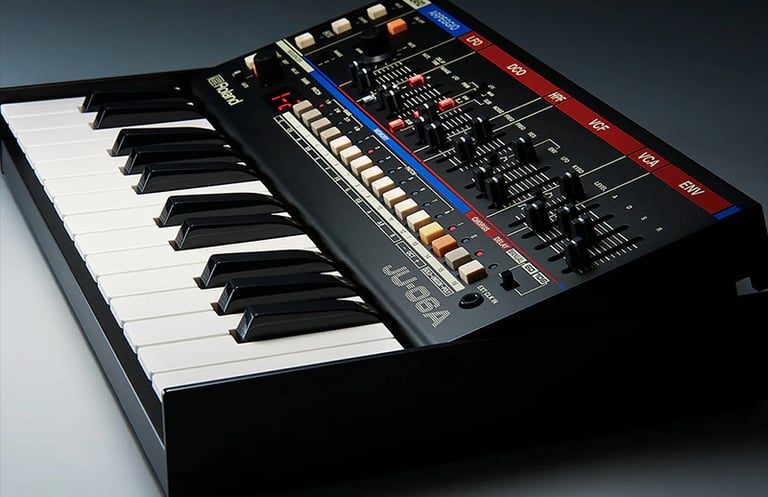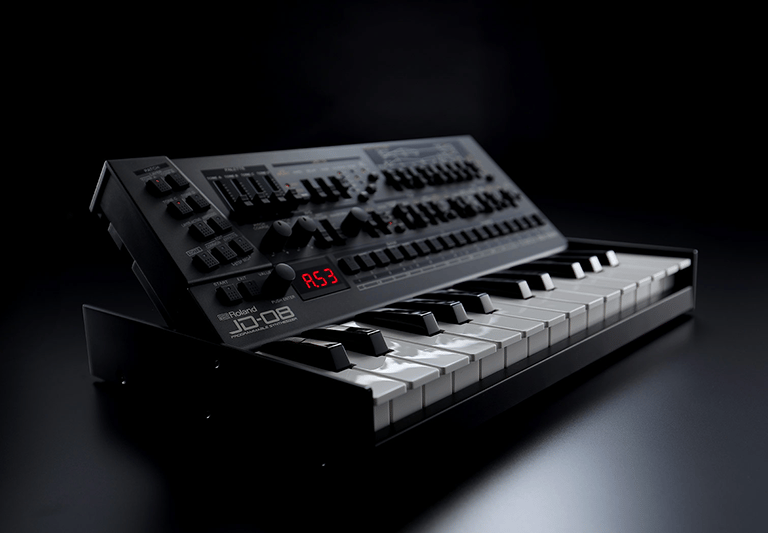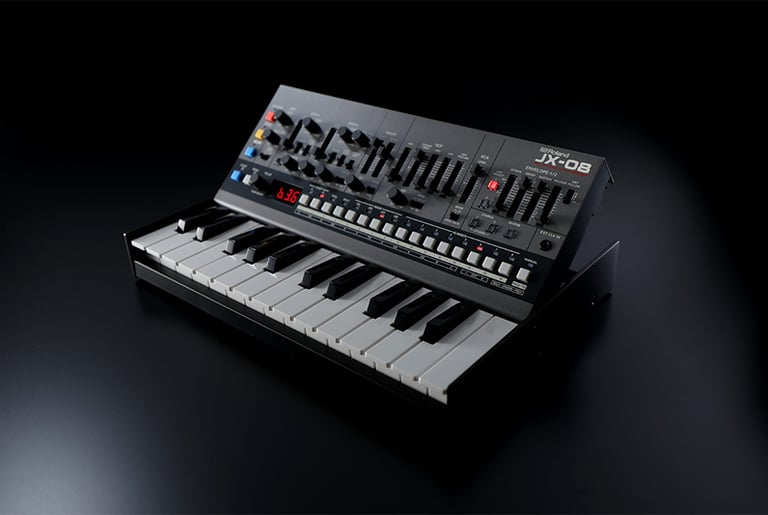These Roland Boutique Synths Deserve a Spot in Your Setup
A look at the JU-06A, JD-08, and JX-08 and what makes them special.
GEARSYNTHESIZERS
Servo Sapiens


Based on: Roland Juno-60 (1982) and Juno-106 (1984)
Original Release Prices:
Juno-60: ~$1,600 USD (1982)
Juno-106: ~$1,200 USD (1984)
Used by:
Juno-60: A-ha, Eurythmics, The Cure
Juno-106: Tame Impala, Depeche Mode, Daft Punk
Current Boutique Price: ~$399 USD
What It Does Best:
The JU-06A blends the best features of both the Juno-60 and the Juno-106 into one sleek, portable package. It excels at lush pads, punchy bass, dreamy leads, and that iconic Roland chorus.
Key Features & Specs:
4-voice polyphony
Authentic Juno-60/106 filter options
Classic chorus I/II modes
16-step sequencer
Arpeggiator
USB and MIDI connectivity
Battery powered or USB bus powered
Chain mode for polyphony expansion
Pros:
✅ Faithful recreation of iconic Juno sound
✅ Dual personality (Juno-60 & 106 modes)
✅ Classic chorus effect included
✅ Portable and affordable
Cons:
❌ 4-voice polyphony limits chord complexity
❌ Mini faders may feel cramped for some
❌ External keyboard required (no onboard keys)
Why You Should Have It:
If you love vintage synth sounds but don’t have the budget or space for a Juno-60 or 106, the JU-06A is your perfect match. Its sound is instantly recognizable and inspiring, especially for synth-pop, indie, and electronic producers.
Final Thoughts:
The JU-06A isn’t just nostalgia—it’s a workhorse that nails the Juno vibe in a modern, portable shell. Whether you’re layering pads, crafting warm basses, or triggering arpeggios, it’s a joy to use.


Roland’s Boutique series has gained a loyal following among synth lovers, producers, and performers for good reason. These compact recreations of classic Roland synths deliver iconic sound, hands-on control, and modern features—without the vintage price tag. In this post, we’re spotlighting three standout models: the JU-06A, JD-08, and JX-08.
Let’s explore the legendary instruments they’re based on, what makes them special, and why they deserve a permanent place in your music setup.
1. Roland JU-06A – The Best of the Juno Era
Based on: Roland JD-800 (1991)
Original Release Price: ~$2,000 USD
Used by:
Vangelis
Jean-Michel Jarre
Nine Inch Nails
Current Boutique Price: ~$399 USD
What It Does Best:
The JD-08 brings back the rich, digital textures and highly editable architecture of the JD-800. Perfect for sound designers, it shines in ambient, cinematic, and experimental music.
Key Features & Specs:
Over 500 waveforms
Two-part multitimbral
4-tone layered patches
64-step polyphonic sequencer
Onboard delay and reverb
Full panel of sliders for hands-on control
USB-C audio/MIDI interface
External clock sync
Pros:
✅ Massive sound design potential
✅ Rich digital textures from the early '90s
✅ Intuitive hands-on interface
✅ Multitimbral with sequencing
Cons:
❌ Slightly more menu-diving than analog models
❌ May feel overwhelming for beginners
❌ Can be CPU-intensive via USB
Why You Should Have It:
If you’re into detailed sound design and want access to the JD-800’s massive patch library without breaking the bank, the JD-08 is a dream come true. Its textured layers make it a standout for scoring, ambient, and atmospheric production.
Final Thoughts:
The JD-08 revives one of Roland’s most distinctive digital synths in a form that’s far more affordable and compact. It’s deep, versatile, and perfect for producers who like to sculpt sounds from scratch.
2. Roland JD-08 – Digital Dreams Reborn


Based on: Roland JX-8P (1985)
Original Release Price: ~$1,895 USD
Used by:
Depeche Mode
The Cure
Tangerine Dream
Current Boutique Price: ~$399 USD
What It Does Best:
The JX-08 excels at warm pads, complex textures, and smooth analog tones. It’s particularly great for synth-pop, new wave, and cinematic scoring thanks to its layered, dual-oscillator sound.
Key Features & Specs:
32-voice polyphony
Two-part multitimbral
100+ original JX-8P presets
Built-in chorus, reverb, and delay
64-step polyphonic sequencer
Hands-on controls via PG-800-style layout
USB audio/MIDI + MIDI DIN
Pros:
✅ Authentic JX-8P sound with modern polish
✅ Deep modulation capabilities
✅ Excellent effects section
✅ Great for pads, strings, and motion sounds
Cons:
❌ Slight learning curve for modulation routing
❌ Buttons can be a bit small for live use
❌ External keyboard required
Why You Should Have It:
The JX-08 brings lush 1980s synthesis into your DAW-friendly world. It’s a versatile poly synth that blends analog warmth with digital precision—great for producers looking to expand their sonic palette.
Final Thoughts:
With its spacious pads and expressive tones, the JX-08 delivers serious vibe. It’s a faithful tribute to the original JX-8P, but far more accessible—and a welcome addition to any synth collection.
Conclusion: Big Sound in Small Boxes
The JU-06A, JD-08, and JX-08 each bring something unique to the table—whether it’s analog warmth, digital complexity, or versatile polyphony. These Roland Boutique synths aren't just nostalgic novelties—they’re fully capable instruments suited for modern production workflows.
For under $400 apiece, they offer unbeatable value, portability, and the kind of sonic character that defined entire genres. Whether you're building a studio from scratch or adding depth to an existing setup, these three synths are a smart, musical investment.
3. Roland JX-08 – Dual Oscillator Brilliance


© Servo Sapiens 2025. All rights reserved.